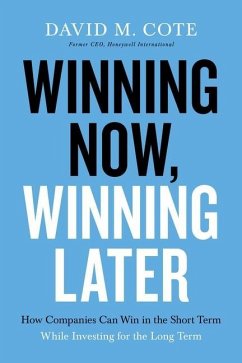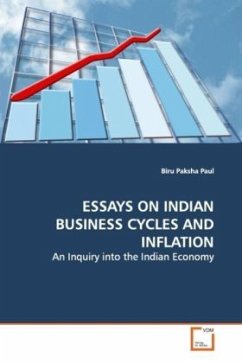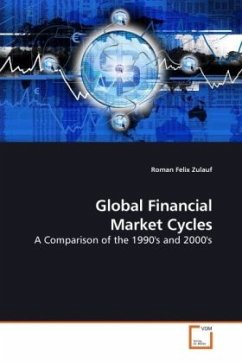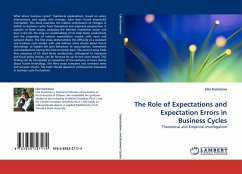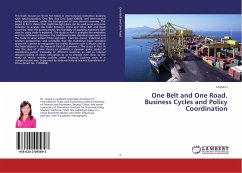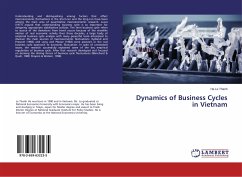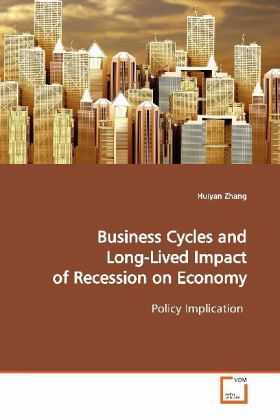
Business Cycles and Long-Lived Impact of Recession on Economy
Policy Implication
Versandkostenfrei!
Versandfertig in 6-10 Tagen
39,99 €
inkl. MwSt.

PAYBACK Punkte
20 °P sammeln!
This book provides new theoretical and empirical evidence to examine three factors often cited as causes of business cycle fluctuations. The first factor is monetary policy; the second is financial structures and crony capitalism; and the third is external shocks, such as European integration.The first paper contains a theoretical and empirical study of sacrifice ratios (costsof using monetary policy to reduce inflation) when disinflation has long-lived effects onoutput or unemployment.The second paper is about the relationship between corruption, economicvolatility, and economic growth.In the...
This book provides new theoretical and empirical
evidence to examine three factors often cited as
causes of business cycle fluctuations. The first
factor is monetary policy; the second is financial
structures and crony capitalism; and the third is
external shocks, such as European integration.
The first paper contains a theoretical and empirical
study of sacrifice ratios (costs
of using monetary policy to reduce inflation) when
disinflation has long-lived effects on
output or unemployment.
The second paper is about the relationship between
corruption, economic
volatility, and economic growth.
In the third paper, I use a standard gravity model
to analyze the separate effects of
exchange rate volatility and economic integration,
such as membership in the European
Union (EU) and participation in the European
Monetary System (EMS), on foreign direct
investment (FDI).
evidence to examine three factors often cited as
causes of business cycle fluctuations. The first
factor is monetary policy; the second is financial
structures and crony capitalism; and the third is
external shocks, such as European integration.
The first paper contains a theoretical and empirical
study of sacrifice ratios (costs
of using monetary policy to reduce inflation) when
disinflation has long-lived effects on
output or unemployment.
The second paper is about the relationship between
corruption, economic
volatility, and economic growth.
In the third paper, I use a standard gravity model
to analyze the separate effects of
exchange rate volatility and economic integration,
such as membership in the European
Union (EU) and participation in the European
Monetary System (EMS), on foreign direct
investment (FDI).



